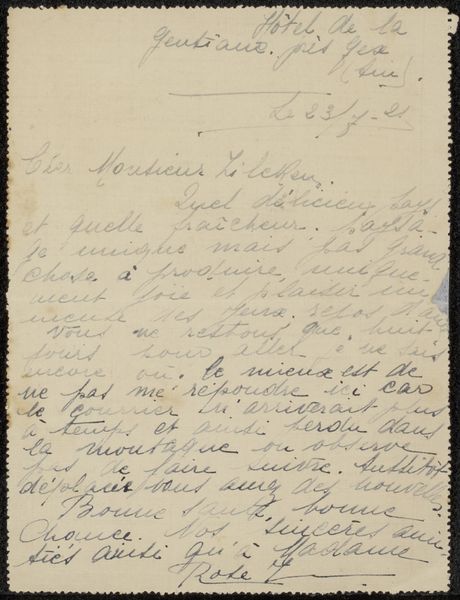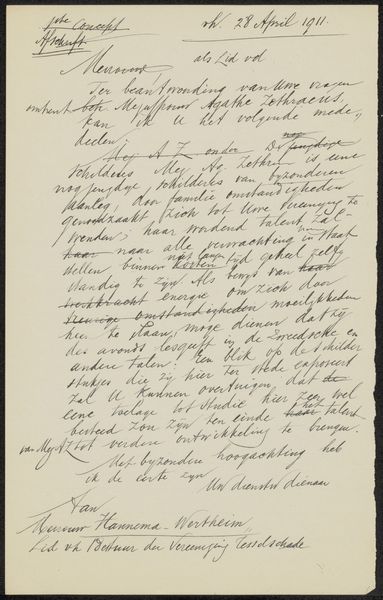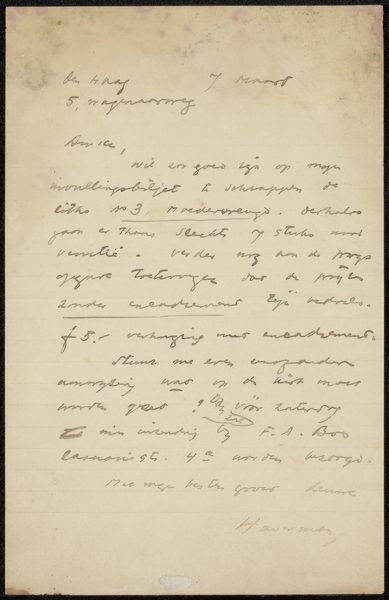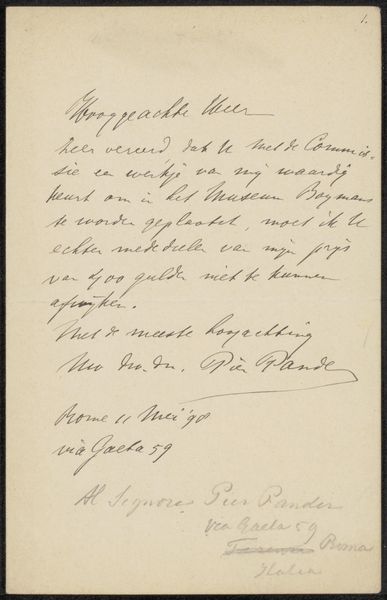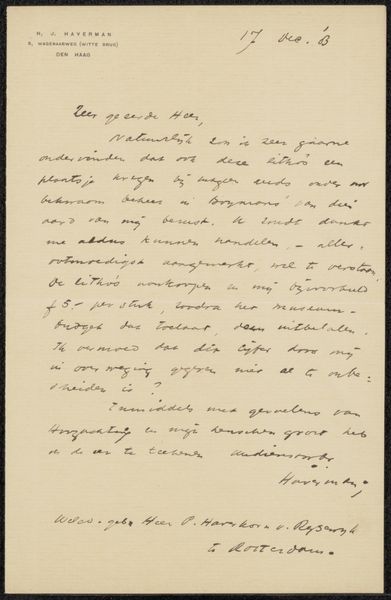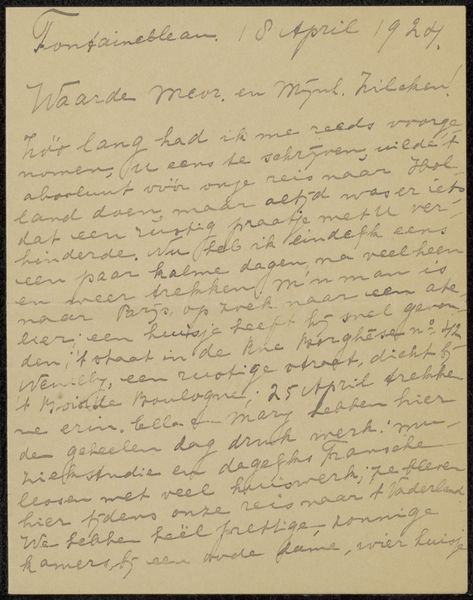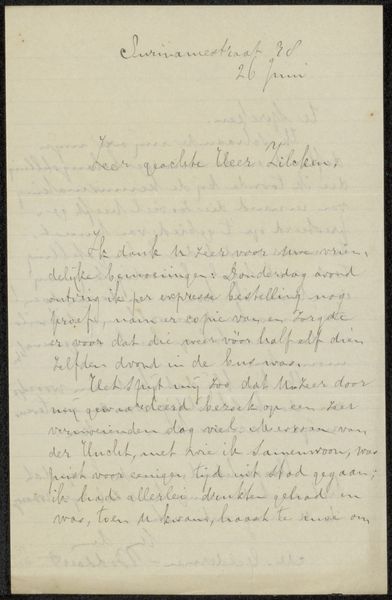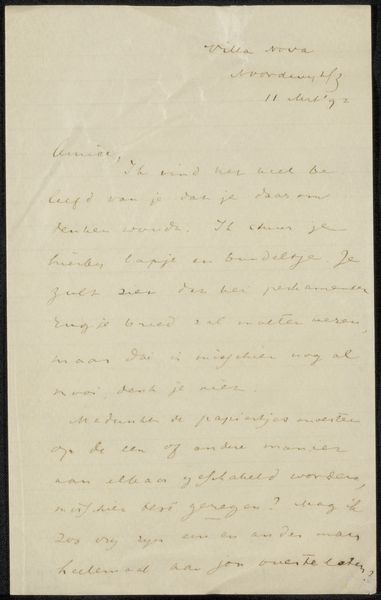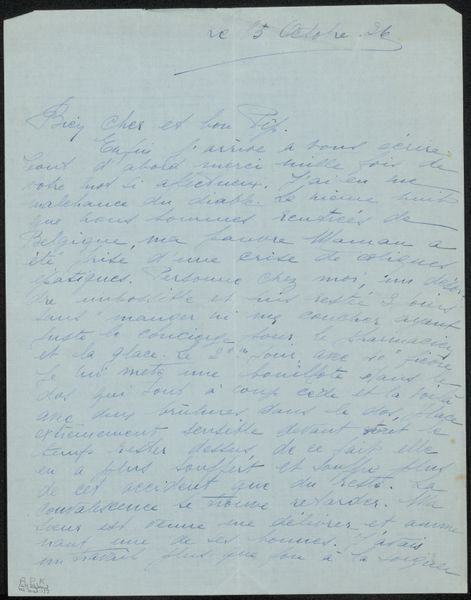
drawing, paper, ink
#
drawing
#
paper
#
ink
#
intimism
#
modernism
Copyright: Rijks Museum: Open Domain
Curator: This drawing, believed to date from sometime between 1896 and 1899, is entitled "Brief aan Philip Zilcken" and attributed to Marguerite Picard. It features ink on paper. What's your initial reaction to this piece? Editor: It feels…private. The handwriting gives a sense of intimacy, as though we're peeking at something not meant for public consumption. There's a quietness to the subdued ink on aged paper. Curator: Indeed. Consider how handwriting itself is a kind of personal iconography. The loops, the slants, each letter reveals something of the writer's personality. It's more than just the content of the words; the script itself holds meaning. This reminds me of a medieval manuscript in a way. Editor: Absolutely, and in that sense, the medium enhances that feeling of historical weight. Modernism was so interesting because of these intersections of classic forms into new genres. How does Picard's modernism engage with the social context, of, perhaps the artist's position? Curator: Picard's engagement here is an interesting push toward abstraction, even. There's an unfinished, preliminary quality that speaks to Modernism’s celebration of process. It is interesting in how we engage in a textual document now with this artistic bent of the author present. We see similar approaches across much modern artwork, as well as more broadly in approaches like intimism. Editor: So we begin to see more clearly that what on the surface appears like a simple note, carries complex dialogues about representation, authorship, and gender roles during that transition. It is something interesting to see that we engage differently when placed within a frame or a museum in place of a mailbox. It completely changes its status. Curator: Precisely. Even now, knowing this note has been deemed worthy of display changes how we view its seemingly mundane message. It pushes the boundaries. Editor: That shift, that is what truly grabs me about "Brief aan Philip Zilcken"–it recontextualizes something that may once have been pedestrian, turning it into an artifact of its time. Curator: It invites us to reflect on how meanings change, shift, and become imbued within objects depending on historical conditions.
Comments
No comments
Be the first to comment and join the conversation on the ultimate creative platform.
